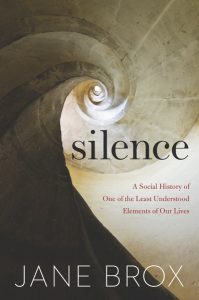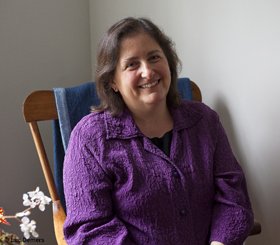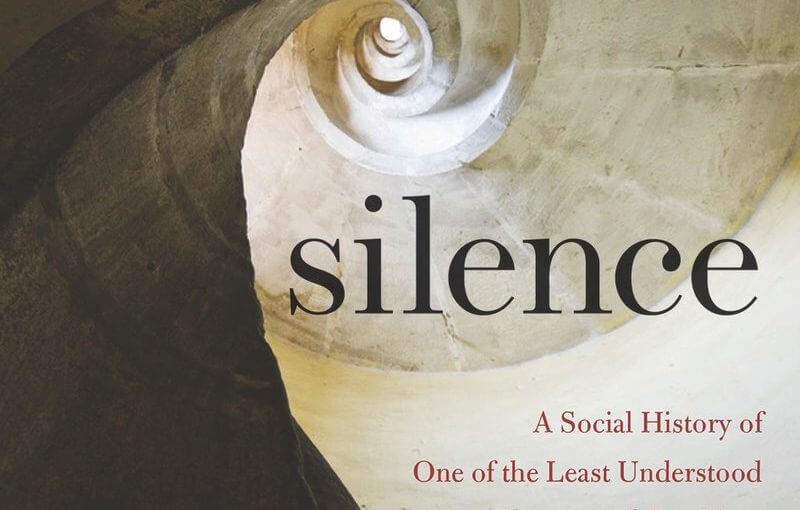Through Penitentiaries and Monasteries,
A Meditation on Silence
By DeWitt Henry, Prose Editor
SILENCE: A SOCIAL HISTORY OF ONE OF THE LEAST UNDERSTOOD ELEMENTS OF OUR LIVES by Jane Brox (Houghton Mifflin Co., 2019). 310pp, $27.00 hard cover, ISBN 9780544702486.
 Jane Brox, like the nineteenth-century Transcendentalists, worries that we lose our best selves to the distractions of civilization, technology, and progress. She is, like Emerson, Thoreau, and Fuller, at once a spiritual writer, an historical researcher, and a poet. Hence, in her previous book, Brilliant, she meditates on our post-Edison “light pollution”—how by altering the natural balance of earthly light and dark, we may be harming ourselves, animals, and the planet. In this new book, remarkable both in its evocative research and its lyricism, she meditates on silence as a seeming aberration in a world filled by the din of civilization.
Jane Brox, like the nineteenth-century Transcendentalists, worries that we lose our best selves to the distractions of civilization, technology, and progress. She is, like Emerson, Thoreau, and Fuller, at once a spiritual writer, an historical researcher, and a poet. Hence, in her previous book, Brilliant, she meditates on our post-Edison “light pollution”—how by altering the natural balance of earthly light and dark, we may be harming ourselves, animals, and the planet. In this new book, remarkable both in its evocative research and its lyricism, she meditates on silence as a seeming aberration in a world filled by the din of civilization.
She divides her topic into two preoccupations, much as Thoreau does with his Concord and Merrimack rivers (one serene, the other unruly and violent): the first is that of criminal punishment and the institution of penitentiaries in the 1800s; the second is that of monastic contemplation and the institution of monasteries from the Middle Ages to the industrial and technological present. Both preoccupations, along with a concern for muted women, support her underlying exploration of meditative silence and spirituality.
She starts with the history of Benjamin Rush’s 1822 design of Philadelphia’s Eastern State Penitentiary as an alternative to Old World blood punishments and simple jails. An associate of Benjamin Franklin’s, Rush believed in reformation and his Eastern State was “an experiment in silence.” Here the cells resembled monastic cells. Brox visits the present-day site—now a tourist attraction. In a cell the size of a parking space, “the barreled ceiling and funneled light from above hark back to the medieval monastery,” she remarks. “…I couldn’t fathom the endurance it took to live in such a way—and to do so obediently.” Rush believed that “by not speaking…one arrives at the fine and mystical silence, wherein God speaks to the soul,” and imprisonment as he designed it was meant to “alter [the inmate’s] soul.”
She delves next into the history of monasteries, discussing the sixth-century Rule of Benedict, communal silence, and the writings of the mid-twentieth-century monk, Thomas Merton. Do silence and solitude engender spiritual growth or despair? she asks. The architecture of monasteries expresses intent, and again she visits Cistercian examples, bringing them alive. “Voices rise out of silence and back to it, and music and silence are interdependent on a house imagined and built for the glory of God….No outside sound of man or nature could penetrate the thick walls of stone.” She cites the practices of silent meals. However, “silence practiced too simply, too much for its own end, is not silence so much as muteness.”
She considers measures of time in relation to silence and the ticking clock as opposed to earlier measures such as hour-glasses, sun dials, ringing bells, sunrise and sunset, and the seasons. Pressures of time, she observes, affect silent prayers; and “all the hurry and consciousness of time” leads to questioning what one does with one’s time. Release from this is “essential to the contemplative life.” She imagines ancient monks mouthing and understanding books that they copied; reading slowly, rather than skimming. “Engaging with one’s reading was an essential part of life” in contrast to today’s “luminous screens.” Light too affects silence, which is intensified by darkness. For Thomas Merton, “the monastic night promised integrity….The limited light intensified smells, sounds, memories; the silence and dark seemed to amplify his ability to register the world.”

Returning to penitentiaries, she contemplates solitary confinement and introduces accounts by prisoners, particularly those of Eugenia Ginzburg (Journey into the Whirlwind, 1937), who spent ten years in a Soviet prison, and of Vera Figner, a nineteenth-century Russian activist, who finds “much fruitfulness in silence,” and yet warns of being cornered. “There were torture in dreams [and] no balm in sleeplessness either.” Charles Williams, the first inmate of Eastern State, had “the regularity of his labors” as a relief. He was a shoemaker, with tools in his cell. Jailers denying inmates the privileges of work and exercise increased solitary’s torment.
Women in prison and in convents pose a special case. Brox cites sixteenth-century laws aimed at muting women’s voices as scolds and gossips and punishing them with iron muzzles and dunking stools. Later women had segregated jails, where education was limited to domestic skills. Meanwhile female writers were threatened by the example of journalist Anne Newport Royall, who, because of her travel books about the frontier, was convicted in 1829 of being a common scold and “sentenced to the ducking stool, but got off with a fine.” In present day MCI Framingham, a prison for women, individual women are routinely moved around, for fear of “creation of intimacy,” and Brox considers this “its own kind of silencing.” Convents, on the other hand, were “made for unmarriagable daughters rather than made by them”; novices were monitored by prioresses and given enclosure from the world, yet were still subject to rule by men. Brox notes that given “almost no documentation of their voices,” historians can only imagine “their silence, their belief, their community bonds.”
A deeper look at Thomas Merton raises different concerns with post-WW2 monasticism. Confronting 50’s science, sputnik, and nuclear missiles, he needed to come to “a more profound place in the larger world.” However, The Seven Story Mountain (1948) was rejected by the church, which forbid him to write about war and civil rights. Convinced “that silence and solitude had much to offer a troubled world—perhaps enough to save it—and that the renewal of society had to come from the transformation of individual souls,” he fought his silencing but reasserted his choice of the church in 1962, and died in an accident in 1968. (The contrast to Ezra Pound’s imprisonment and silence might be worth pursuing.)
As far as the penal mission and circumstances in our time, Brox approves of communal socialization (inmates live in a crowd with two per cell and are offered exercise, recreation, work, and education), but she opposes solitary as inhumane. Modern prisons have guards, surveillance cameras, and lock systems; and the environment is one of incessant noise from TVs and radios and a babble of languages. Where Eastern State was ten acres, Pelican Bay State Prison in California is a 275-acre compound, housing over three thousand inmates. Our country has two thousand state and federal prisons and over three thousand county jails, with a total prison population of over 1.5 million men and women, with minorities a disproportionate percentage. Prisoners experience not silence but time, and the time can be used to read. Brox cites the example of a lifer in MCI Shirley, who discovered Thomas Merton’s Seeds of Contemplation and formed the forty-first chapter of the International Thomas Merton Society. Now MCI Shirley has one of the largest collections of Merton in the country. “In a noisy place…the books offer both communication and a chance to find what silence can offer…and, perhaps, to be changed.”
More than a history or tract for reform, this book celebrates writing as a spiritual act. The breadth and intensity of Brox’s interests may seem unwieldy, like a symphony lacking a coda. But then the coda comes. Forty years ago, Brox, just out of college, went on a self-imposed retreat to house-sit in Nantucket. “That winter was also my first serious attempt at a writing life.” She heard her calling and made her choice.
Copyright 2019 Woven Tale Press LLC. All Rights Reserved.

